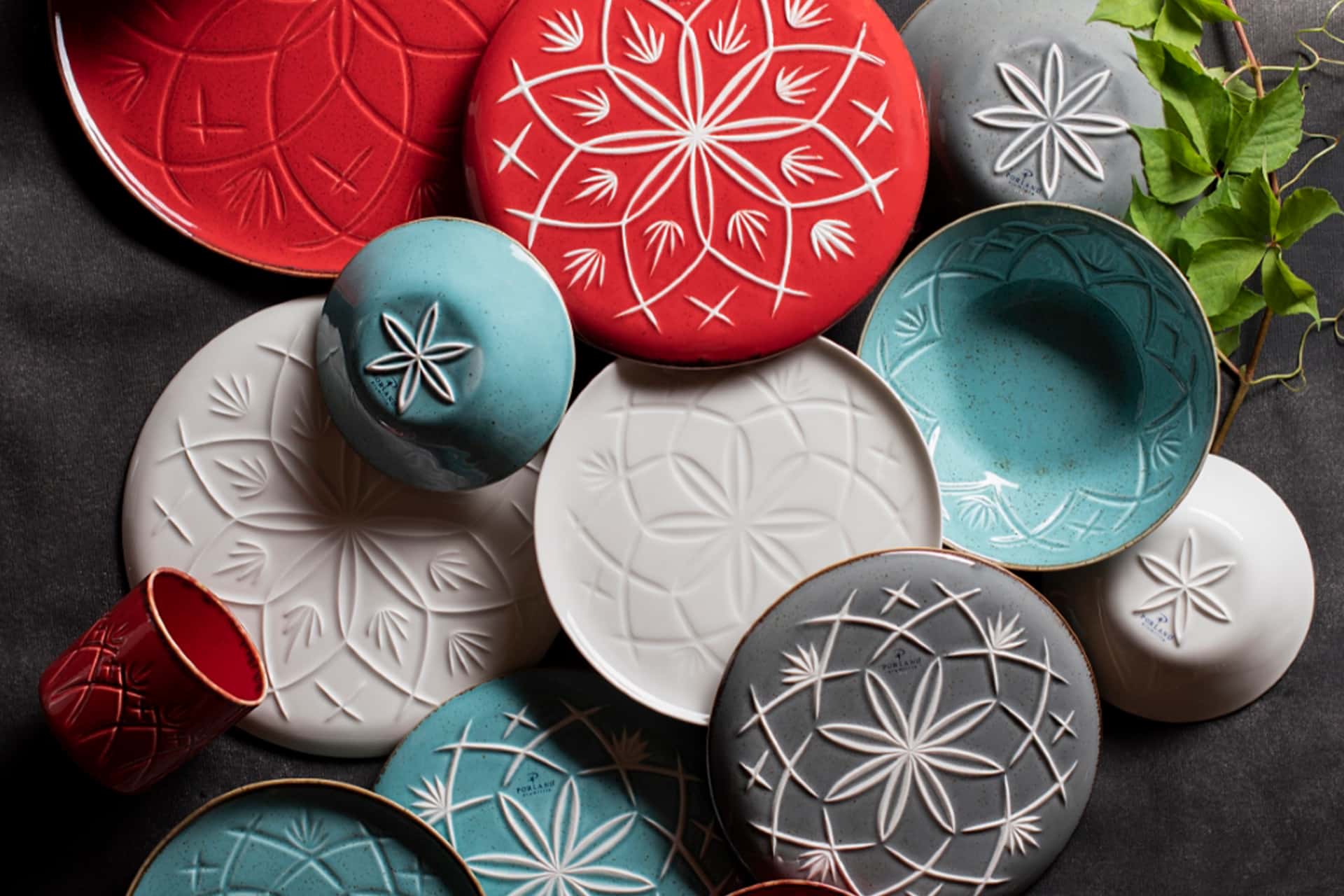For some time, neutrals were the color palette of choice when it came to the tabletop. Driven by small-space living and a more casual lifestyle, neutral colors had the ability to be mixed and matched and dressed up or down for any event. Personality could be shown through glassware or centerpieces, something that was not as committed as a full set of tableware.
Now, however, the tables have turned and consumers are putting it all out there on the table — their personalities, of course.
“There’s no better way to create a positive atmosphere for yourself and guests than sharing a meal. When you bring your own style to the table you reflect your personality and values and become the creator, you are the one that will make a unique memorable experience for everyone,” said Jackie Shapiro, founder, French Bull. “The resurgence of bold colors and designs in tabletop is a reflection of all these changing tastes and a desire for more expressive and personalized home decor.”
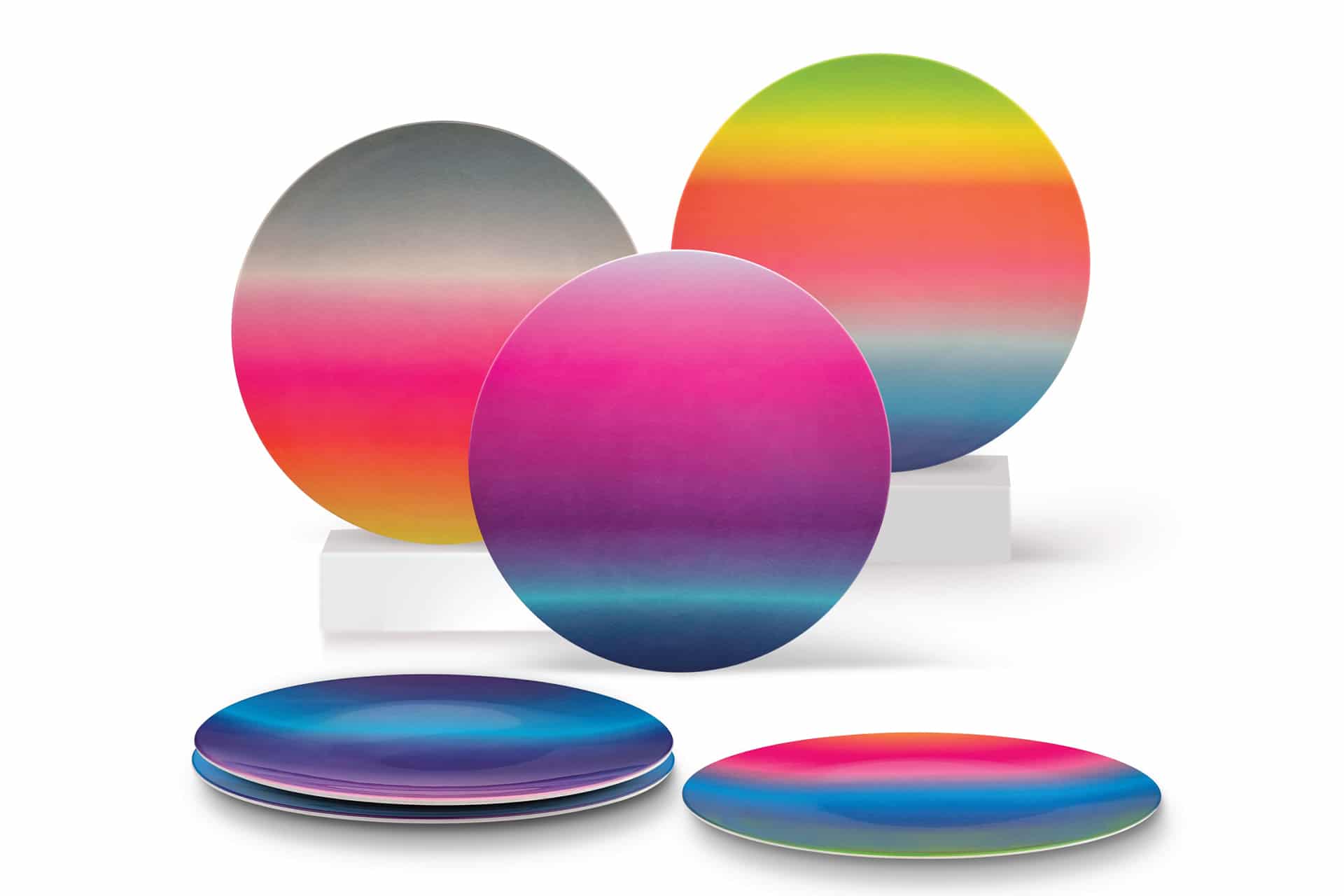
French Bull Aurora Dinnerware
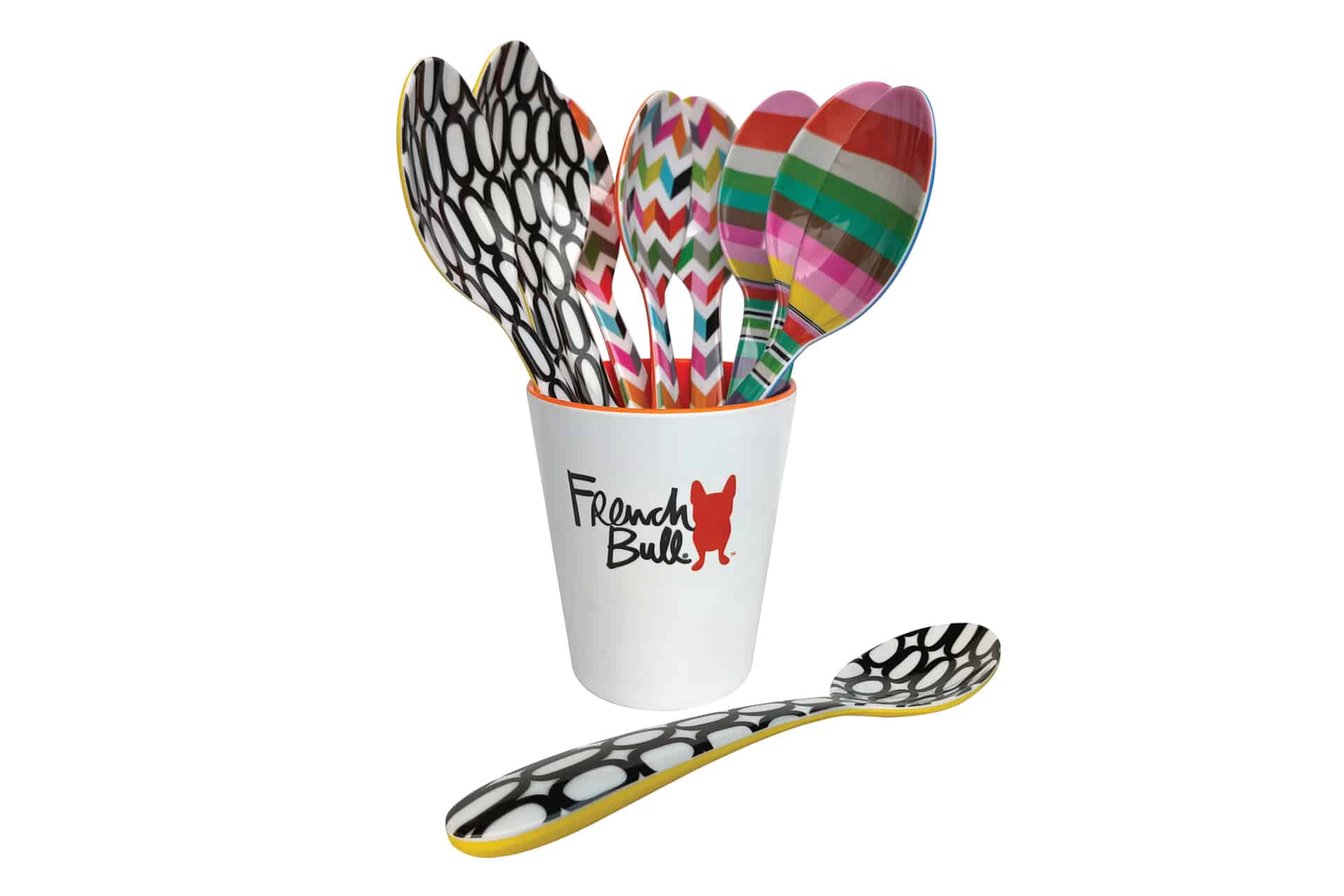
French Bull Assorted Serving Spoons
It has long been the adage that tableware follows fashion. The patterns and colors that are on the runway in Milan and Paris somehow find a way to make it to your home’s runway — the table. That is a trend Rosanna Bowles, CEO and owner of Rosanna, Inc. is seeing a lot of these days.
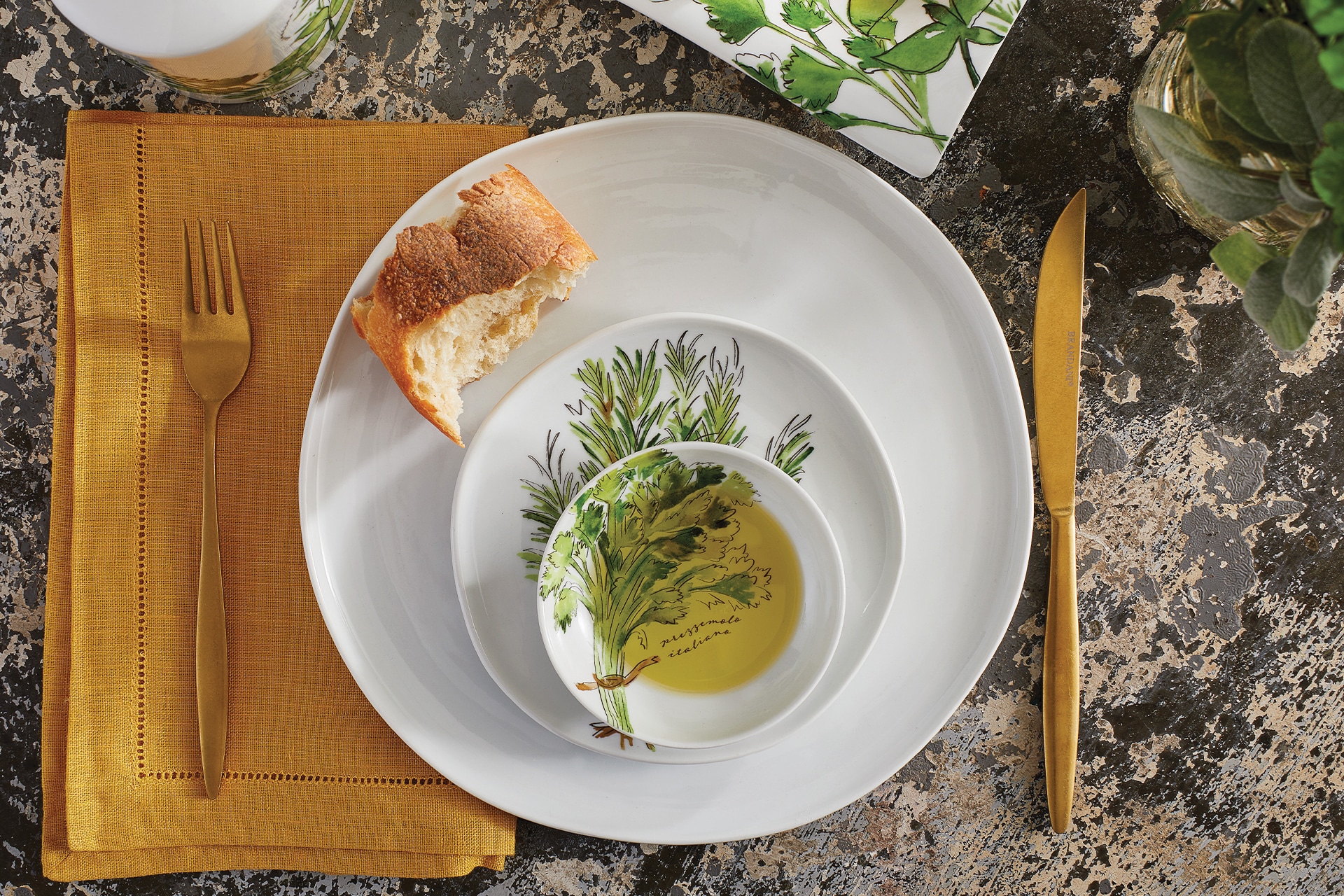
Rosanna Erbe Italiane
“Look at the bold colors of fashion and the mixing and matching of textiles and patterns. We are doing the same thing at the table,” she said, noting that mismatching dinnerware shows off the creativity and style of the table setter. “By creating your own style at the table, you are making your own memories that will remain long after the meal is over,” she added.
Lisa Knierim, Chief Development Officer of Creative Tops, Inc, (who holds the Porland Line of table goods) explained that she has been seeing a lot of “happy hues such as yellows, greens, blues, and reds,” as consumers are being drawn to less serious tabletop designs as they once were. Knierim also said that the color and design trends in tabletop are being driven by one important factor — consumer confidence.
“Consumers are adding their own twist to their tables and getting more confident in mixing and matching décor, patterns, and colors,” she said. Going into the next year, she predicts that botanical and nature motifs will be a hot ticket, as will bold color combinations such as red and turquoise.
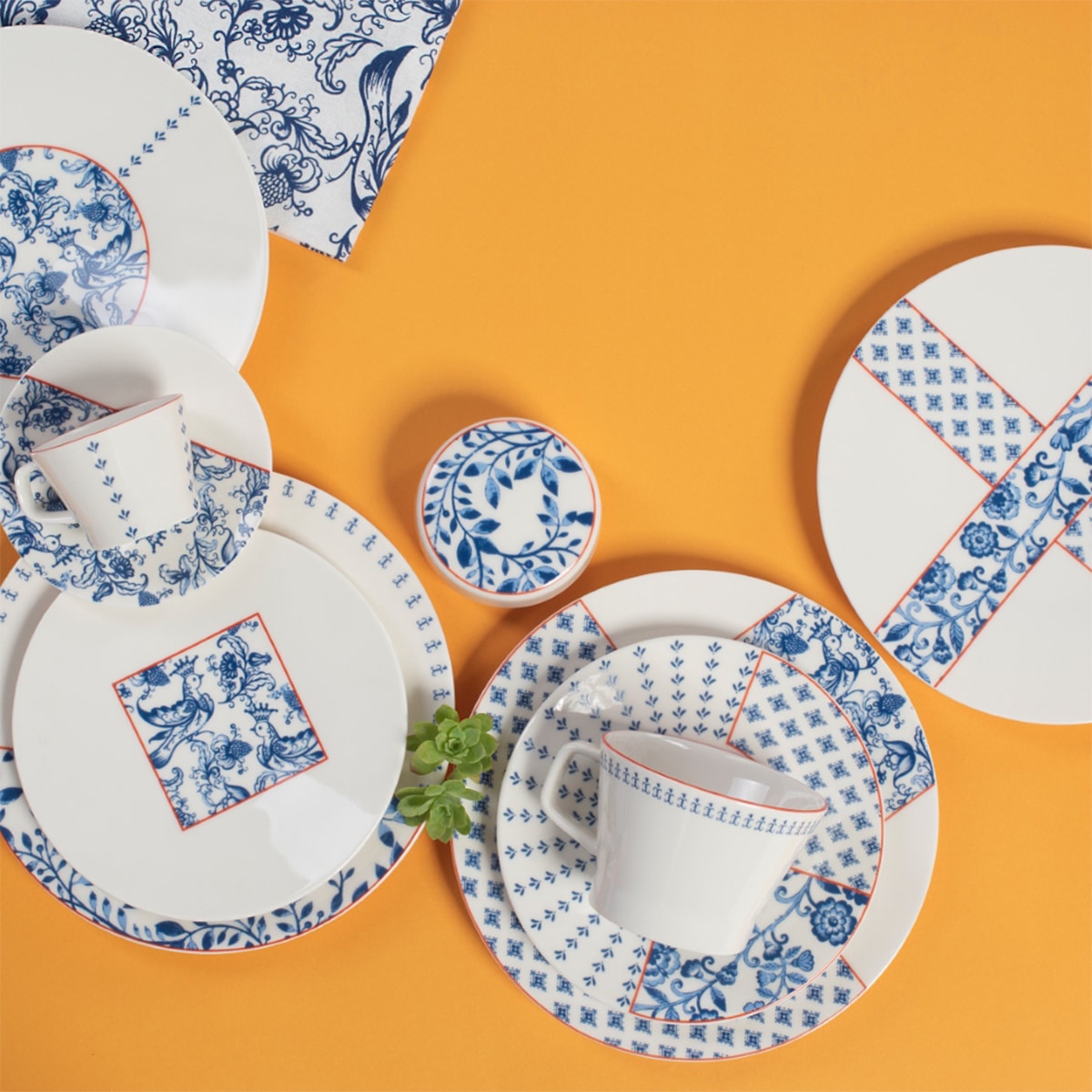
Porland Folksy
Bowles, too, has pegged earth-driven looks, like terra cotta, rich amber and several green hues will be popular in 2023 as well, explaining the tones are perfect for mixing and matching. But, Bowles also said to be on the lookout for watercolor-type art on tableware, as well as patterns and shapes that evoke feelings of happiness and playfulness.
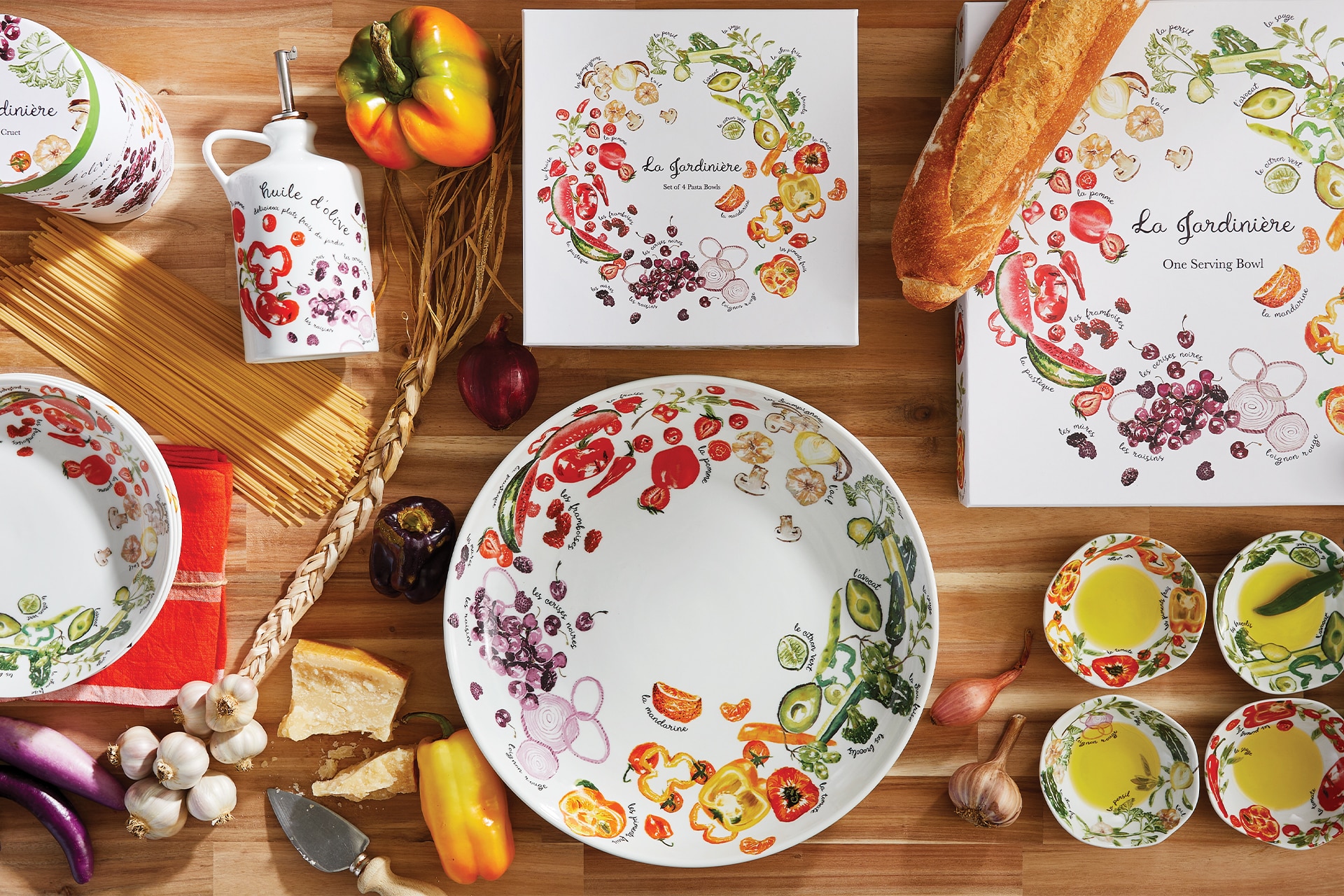
Rosanna La Jardiniere
Shapiro explained that emotion-driven beauty is speaking to consumers lately, with shoppers looking for a certain “vibe” with their tableware. These include bold colors, playful patterns, and a mix of classic and modern styles, she noted. Florals will be bold and oversized with bright, expressive and vivid blooms, while metallic accents — gold, silver and copper — will also be shining bright in tabletop this year. Tile patterns and contemporary patchworks, too, (like Porland’s Christina pattern, pictured top) will be top-of-mind with consumers wanting to refresh their tables.
However, experts said that consumers aren’t willing to compromise on things like versatility and durability, no matter how a certain line of goods speaks to them. If it’s not easy to use, handle and store, it’s simply not worth the investment for them.
“We’re definitely spending more time at home, and most of us have a relaxed and informal lifestyle, so we increasingly turn to tableware that’s versatile, durable, and easy to use. This trend is reflected in the popularity of materials that are light, won’t chip and are dishwasher safe,” Shapiro said.
Sustainability, as in most aspects of life, will also still remain a factor for consumers purchasing tableware, noted Knierim, as they will be more apt to make purchases through a sustainability buying lens than previous purchasers. This can include products that can be reused or that come made with some recycled or reused content. However, consumers also look at the packaging and carbon footprint as well when making an overall purchasing decision.

